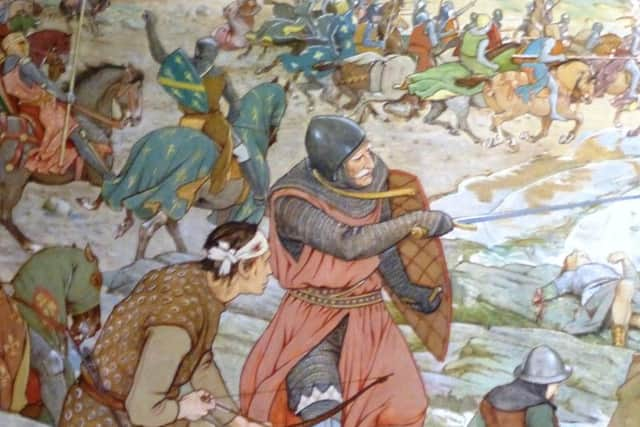On this day 1263: Vikings and Scots clash at Battle of Largs
and live on Freeview channel 276
The battle, on this day in 1263, delivered no clear victor but it ultimately led to the end of Viking influence over Scotland.
King Haakon IV sailed from Bergen in July 1263 as Alexander III, King of Scots, made intensifying claims on lands in the Hebrides where allegiance was given to Vikings from western Norway.


Advertisement
Hide AdAdvertisement
Hide AdThe King of Scots, whose formal request to retrieve the islands was rejected by the Norwegian king, ordered an attack on the Isle of Skye in a show of might.
Haakon responded and led a fleet first to Orkney and then into the Outer Hebrides to collect fighting power.
At the time, some of the smaller islands off the mainland, including Bute and Cumbrae, which sits just five miles from the coast, also fell under Viking control.
As Haakon drew closer to the mainland, his fleet was stopped in the Clyde where the Scots delayed the advance by agreeing to negotiations.
Advertisement
Hide AdAdvertisement
Hide AdBut a rouse was at play and as Haakon’s ships stalled, an army was being assembled at Ayr to meet the Norsemen on land.
With talks coming to an end, Haakon and his forces sailed through the Cumbrae Gap with the King ordering part of his fleet to attack Lennox with the remainder to take Bute.
Great Cumbrae was also captured and used as a base for the operation.
Perhaps Alexander III’s best weapon then came into force - the autumn weather.
Advertisement
Hide AdAdvertisement
Hide AdIn the early hours of October 1, a heavy storm ripped up a number of Norse ships berthed at Great Cumbrae and deposited the boats on the mainland just south of Largs.
A small force was sent to repair the boats the following day and, as the diminished Norse army ventured onto hostile territory, the Scottish army began to mobilise.
Haakon was removed to safety by his bodyguard with a long ship sent ashore to reinforce the Viking force.
Fierce fighting was recorded on the beach and a mound first held by the Vikings was taken by the Scots later in the day before falling back under Norse control.
Advertisement
Hide AdAdvertisement
Hide AdIt has been said that the Battle of Largs was more like a skirmish than Haakon’s intended invasion.
Ultimately, the Scots withdrew and the Norwegians took to their ships once again. King Haakon wanted further action but he retreated to Orkney for the winter. He died in Kirkwall that December.
His successor, Magnus Haakonarson, King of Norway, signed the Treaty of Perth three years after the battle with Scandinavian control over Scotland then starting to unravel.
It leased Scotland’s western seaboard to Alexander III in return for a yearly payment with the former Norse lands coming under permanent control of the King of Scots.
However, centuries of Viking invasions and occupation left an indelible mark on Scotland with hundreds of words, surnames and place names bearing Scandinavian origins.
